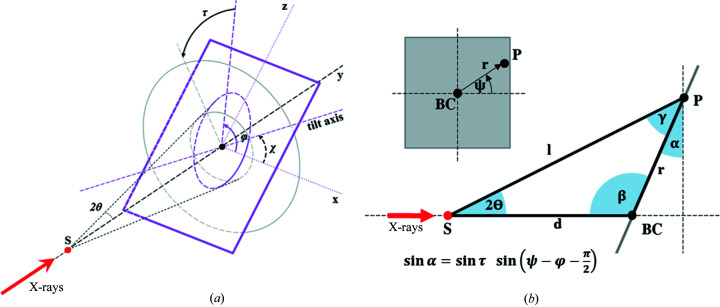Figure 5.
(a) Sketch of the geometry convention used in SAXSDOG. Here, the X-ray primary beam (bold red arrow) impinges on the sample (red dot) along the y axis. The detector (violet plane) is tilted away from the primary-beam trajectory (the normal incidence plane is shown in grey). The detector tilt can hence be defined in terms of two unique angles according to FIT2D definitions: (i) the tilt rotation φ [violet arc, φ = χ + π/2 with χ as the angle between the tilt axis and detector horizontal axis as used in GSAS-II (Toby & Dreele, 2013 ▸)] and (ii) the tilting angle τ (black arc). The positive directions of angles are indicated by arrows. The distortion effect of these two tilting angles can, however, be summarized such that the 3D geometry can be reduced to a 2D geometric problem for each detector pixel in terms of α as shown in (b). Here, detector pixels are expressed in distance r from the beam center (BC) and angle from the horizontal axis ψ (see inset).

